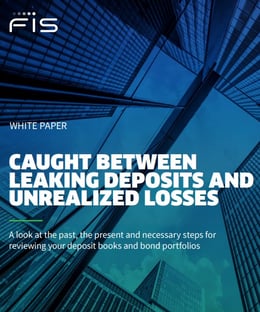
Caught Between Leaking Deposits and Unrealized Losses

Pre-pandemic, financial institutions faced challenges related to availability and funding costs. They had to increase deposit rates and rely more on wholesale funding. However, the pandemic led to a surge in deposits, mainly attributed to federal stimulus distribution and reduced spending. Deposits increased by over 20% in 2020 but slowed down from September 2021 onwards as spending resumed.
Despite increased deposits, loan demand hasn't kept up, prompting financial institutions to seek riskier investments with excess liquidity. This poses risks in an uncertain economic environment, particularly for smaller institutions lacking expertise. Rising deposit betas increase risks for smaller institutions compared to larger ones benefiting from customer inertia. The recent rise in interest rates devalues bond portfolios, potentially leading to losses if bonds are sold during a crisis. Shifting to held-to-maturity (HTM) securities carries accounting and regulatory differences, with a risk of illiquidity and losses during an extended market crisis. Regulators focus on stress testing HTM securities for forced sales triggered by extreme events.
Download this white paper from FIS to take a look at the past, the present and necessary steps for reviewing your deposit books and bond portfolios.
.png?width=1816&height=566&name=brandmark-design%20(83).png)